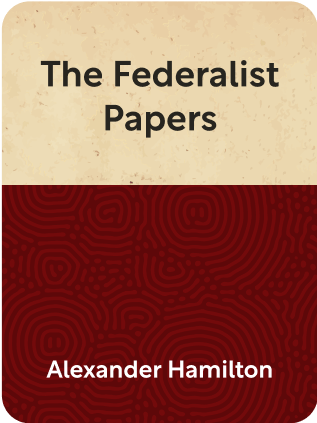

This article is an excerpt from the Shortform summary of "The Federalist Papers" by Alexander Hamilton. Shortform has the world's best summaries of books you should be reading.
Like this article? Sign up for a free trial here .
What is Federalist 46 about? How does it address the balancing act between state and federal power in the Constitution?
Federalist 46 addresses concerns about giving the federal government too much power. Anti-federalists thought government should be more localized and tailored.
Read more about how state and federal power are balanced and the arguments made in Federalist 46.
Federalist 46: Relations Between State and Federal Power
Continuing on this theme, the Constitution provided clearer guidance than the Articles on what the balance of powers would be between the states and the central government. Beyond what we’ve already outlined, the Constitution stipulated that, while the admission of new states was solely the prerogative of Congress, the federal government had no authority to make new states out of the old ones without the consent of the latter.
This meant that Congress could not unilaterally carve new states out of the boundaries of the existing ones or merge two existing states together to forge a new one. This was an important guarantee and demonstrated that the states would continue to exercise political sovereignty under the new Constitution. Federalist 46 aimed to show that the federal government was not too powerful.
The amendment process also placed the states front and center. The Constitution could not be amended without the amendment being ratified by ¾ of the states, acting through their legislatures. Thus, the states did not just passively accept their status under the Constitution; they would play an active role in shaping the nature of the Union itself.
Unlike the Articles of Confederation, the Constitution explicitly guaranteed that each of the states was to have a republican form of government. The newly strengthened federal government had the requisite power to enforce this provision and come to the aid of any state, should it have the misfortune of falling under the sway of a monarchical or aristocratic faction.
State and Federal Power
Any proper analysis of The Federalist Papers must, of course, take into account the historical context in which they were written. The Articles of Confederation, the national legal framework for the Union prior to the adoption of the Constitution, had proven to be a failure. Federalist 46 built on that.
States had too much power relative to the federal government. As we’ll see, the Articles only acted upon the states in their collective capacities, not upon the actual people of the states. Thus, it was not really a proper national government, but, rather, a loose and ramshackle collection of semi-independent sovereign states. The national government merely presided over this collection of independent states, but exerted no control over them.
The government under the Articles was unable to perform basic functions like:
- Regulating interstate commerce
- Putting down domestic insurrections and protecting the nation against the threat of foreign invasion
- Preventing states from forming their own commercial treaties with foreign powers
- Adequately raising revenue from the states to meet its debt obligations from the Revolutionary War
Moreover, the equal representation of the states in Congress (regardless of population) gave small states disproportionate political power. They could block the passage of legislation on important national priorities for parochial and self-interested reasons.
The weak design of the Articles of Confederation was no accident and state power wasn’t always appropriate according to Federalist 46. Americans at the time greatly feared a strong central government, a legacy of their opposition to King George III and their reading of recent British and American history. They believed that a strong central government, like the monarchical system of Great Britain, would trample upon the liberties they’d fought to secure.
The authors of The Federalist Papers needed to overcome this ingrained political opposition to a strong Union between the states, like with the positions in Federalist 46. Alexander Hamilton, James Madison, and John Jay (writing under the collective pseudonym “Publius”) used The Federalist Papers to make the opposite case: that a strong national government was not a threat to liberty; in fact, it was its greatest guarantor.

———End of Preview———
Like what you just read? Read the rest of the world's best summary of Alexander Hamilton's "The Federalist Papers" at Shortform .
Here's what you'll find in our full The Federalist Papers summary :
- The genius of the founding fathers in how they designed the United States Constitution
- Why it was critical for the United States to form a union rather than stay separated as colonies
- How Alexander Hamilton anticipated social issues that are still relevant today






